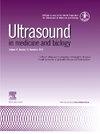低速血流非对比超声成像技术进展:技术综述及在血管医学中的临床应用。
IF 2.4
3区 医学
Q2 ACOUSTICS
引用次数: 0
摘要
随着超声成像技术的进步,从主动脉到小血管的超声动脉树可视化已经有了显著的改进。超声分析最初仅限于探测主要血管,随着图像质量的提高,超声分析取得了相当大的进展。虽然注射微泡造影剂部分解决了这一限制,但由于需要静脉注射,其使用受到限制,使检查更加复杂和耗时。为了解决这些缺点,新的商业模式出现了,不同于传统的彩色和功率多普勒模式,提供了分析慢流的能力,从而可以分析微血管。这些专用成像模式包括B-flowTM、E-flowTM、Superb Microvascular imaging (SMITM)、Micro Flow imaging (MFITM)、MV-FlowTM、detection Flow imaging (DFITM)、Micro- vtm和Angio PLUS imagingTM。尽管这些模式具有相似的目标,但它们基于不同的技术,每种技术都有自己的特点。这些模式背后的精确算法各不相同,都是专有的,但都依赖于多种方法的组合,以减少组织杂波和电子噪声,同时提高对慢流多普勒信号的灵敏度。本文旨在向血管超声专业医师和超声医师解释目前临床上可用于血管成像的这些“微血管血流成像模式”(MVFI)的技术基础,讨论其目前的局限性和在血管医学中的潜在应用。本文章由计算机程序翻译,如有差异,请以英文原文为准。
Advancements in Noncontrast Ultrasound Imaging for Low-Velocity Flow: A Technical Review and Clinical Applications in Vascular Medicine
Visualizing the arterial tree using ultrasound, from the aorta to the small vessels, has significantly improved over time due to advances in ultrasound imaging technology. Initially limited to exploring the major vessels, ultrasound analysis has made considerable progress with enhanced image quality. While injecting microbubbles as a contrast agent partially addresses this limitation, its use is constrained by the need for intravenous injection, making the examination more complex and time-consuming. To address these drawbacks, new commercial modes have emerged, distinct from conventional color- and power-Doppler modes, offering the ability to analyze slow flows and, consequently, microvascularization. These dedicated imaging modes include B-flowTM, E-flowTM, Superb Microvascular Imaging (SMITM), Micro Flow Imaging (MFITM), MV-FlowTM, Detective Flow Imaging (DFITM), Micro-VTM, and Angio PLUS imagingTM. Although these modes share similar objectives, they are based on different technologies, each with its own specific characteristics. The exact algorithms behind these modes vary and are proprietary but rely on a combination of approaches to reduce tissue clutter and electronic noise while improving sensitivity to slower-flow Doppler signals. This review aims to explain the technological basis of these "microvascular flow imaging modes” (MVFI) currently clinically available in vascular imaging to the physician and sonographer specialized in vascular ultrasound, discussing their current limitations and potential applications in vascular medicine.
求助全文
通过发布文献求助,成功后即可免费获取论文全文。
去求助
来源期刊
CiteScore
6.20
自引率
6.90%
发文量
325
审稿时长
70 days
期刊介绍:
Ultrasound in Medicine and Biology is the official journal of the World Federation for Ultrasound in Medicine and Biology. The journal publishes original contributions that demonstrate a novel application of an existing ultrasound technology in clinical diagnostic, interventional and therapeutic applications, new and improved clinical techniques, the physics, engineering and technology of ultrasound in medicine and biology, and the interactions between ultrasound and biological systems, including bioeffects. Papers that simply utilize standard diagnostic ultrasound as a measuring tool will be considered out of scope. Extended critical reviews of subjects of contemporary interest in the field are also published, in addition to occasional editorial articles, clinical and technical notes, book reviews, letters to the editor and a calendar of forthcoming meetings. It is the aim of the journal fully to meet the information and publication requirements of the clinicians, scientists, engineers and other professionals who constitute the biomedical ultrasonic community.

 求助内容:
求助内容: 应助结果提醒方式:
应助结果提醒方式:


